
If you are planning a holiday with your baby in a safe, clean and friendly country with lots of cultural experiences, then consider Japan! Three generations – grandparents (that’s us), my daughter and her husband and our little grandson recently spent a few weeks in Japan. Felix was then 11 months old and already an intrepid traveller. It helped that he wasn’t walking yet!
My top 10 tips for travelling with a baby in Japan are –
(1) Visit the countryside
Many people confine their holidays to the major urban areas. Do be more adventurous! We have no Japanese skills but most locals have a smattering of English, and as a back-up, sign language works well. The countryside is beautiful, the pace is slower, everyone will be more relaxed. There’s so much to experience!

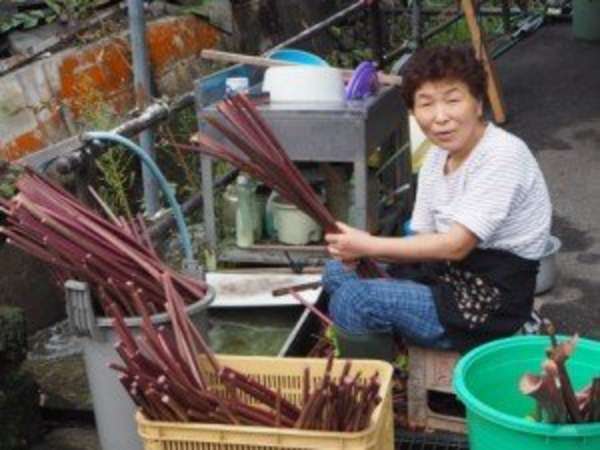

(2) Buy a Japan Rail pass
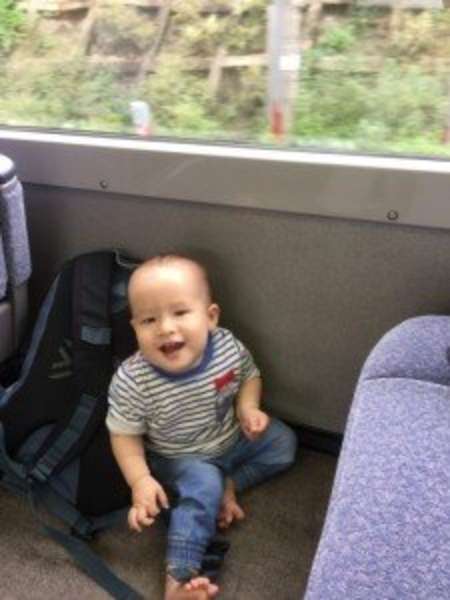
If your budget allows, buy a Green pass (business class seats). I thought it would be an extravagance, and did not want fussing with seat reservations. Instead JR officers were super efficient and patient, it was no bother at all. Having reserved seats also allows you to double check that you are on the right train – all you need to do is show your ticket and JR staff will help. Do some research about the trains and destinations before you buy. The hyperdia.com website is accurate, up-to-date, and gives you more reliable information than some free advice lines.
Activate your JR pass only when you leave your main port of embarkation. In our case we stayed in Tokyo for 5 days and activated our 14-day pass when leaving for Kanazawa. Make your reservations two stops at a time as it is less confusing than making reservations for your whole trip all at once.
You may have to change trains and I saw travellers frazzled because of an 8-minute change. After our first journey, we realized that it was possible to plan on 20-minute changes with appropriate train schedules. All trains are very clean and your baby can safely sit and play on the floor.
(3) Rent a machiya or Japanese-style house
We had a beautiful, spacious, double storey traditional machiya in Takayama and again in Kyoto, which allowed us to cook a few meals and spend more time together than in hotel rooms. A warning – the stairs are steep so look for a house that has (a) a toilet upstairs for night visits, and (b) stairs with a hand rail. Privacy is not great as the sliding doors are made of paper, but I think that’s part of the charm.

(4) Take a taxi for short to medium rides in urban areas
It’s not much more expensive than bus or rail to take a taxi if there are 4 adults. Babies don’t need special seats and it’s quite safe.
(5) Bring a baby sling and a small fold-up stroller
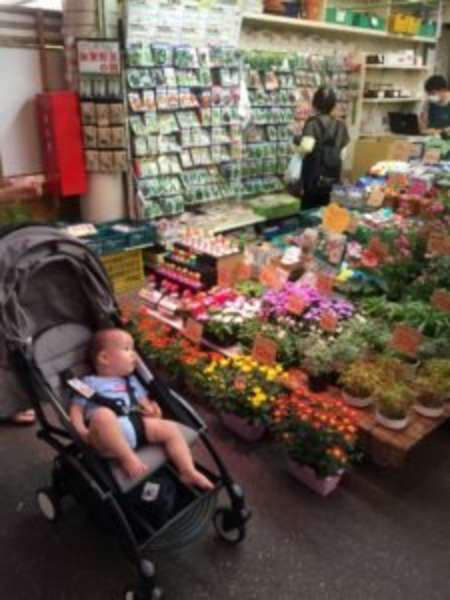
You’ll be very thankful for the versatility, as it may be difficult to find elevators and escalators in many places in Japan including train stations.
When going for daytrips or walks, always bring a baby carrier. Many tourist destinations are centuries old and not disability or stroller friendly, so when you meet with lots of steps you sling the stroller over your shoulder!
We bought a Babyzen Yoyo for the holiday. There are cheaper on-line versions of the popular brands. I checked out a Pocket stroller in Toys- r-us in Aeon Mall, Kyoto, right near the train station and it was priced much less than Australia.
(6) Get access to data
You’ll need data to negotiate the subways, find restaurants, etc. otherwise it gets very stressful. In other countries you can download Google maps before you visit, but this doesn’t work for Japan. If you rent an AirBnB in the main cities your host will probably loan you a pocket wifi. Otherwise the 3 main options are –
- Rent a pocket wifi online outside of Japan for about USD 10 a day and pick it up at the airport. It’s not possible for a tourist to rent a pocket wifi within Japan. After your trip, you need to mail it back to the airport with a pre-addressed and stamped envelope.
- Buy a SIM card for unlimited data at the main airports for about USD 10 a day. However the costs pile up because there’s an administration fee, and also additional fees for making local and international calls and text messages.
- I opted to buy a SIM for data alone (no voice calls) and it cost about USD 30 for 14 days with 2 GB of data, Whatsapp and FB use excluded. This proved indispensable when driving around Hokkaido! Large camera shops (Yodabashi and Bic) in any of the large cities sell these. Avoid the B-mobile visitor SIM card which promised unlimited data for 14 days – it caused me no end of grief. If it’s too good to be true it isn’t!
(7) Ride a bike in Kyoto!
Everyone goes to see the shrines and gardens, but it’s so easy to get overloaded. A bicycle ride was our top experience in that city! I think Felix enjoyed it very much too! Bike rentals can be around the train station. The tours were booked out, but we had more flexibility on our own and managed fine with a free book on bike routes furnished by the rental company.

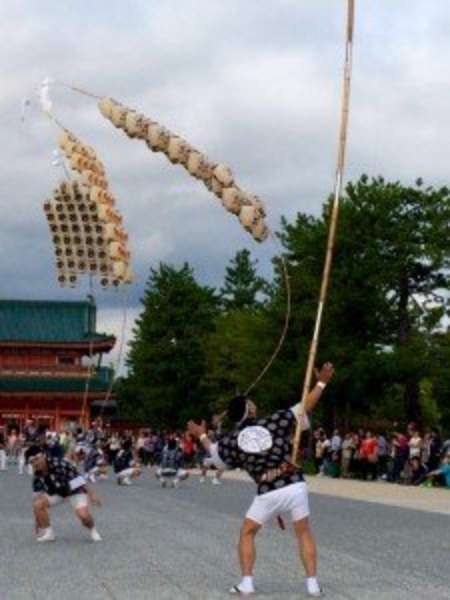

(8) Catch a sumo match in Tokyo
Your son or son-in law will probably be interested in sumo. It is an authentic cultural experience. The set up is baby friendly and you can walk around between matches. Do visit the official website to see whether the competitions are on. It’s much better to buy tickets online than taking a chance on the day itself. Eager beaver that I am, I waited for sales to open (6 August, 2016) and snapped up 4 tickets. NOTE family tickets are not available to non-Japanese, even if the website appears to say that this is an option. The tickets are for the whole day. Unless you are a very serious fan, plan to turn up only between 3-3.30 pm. The good sumo matches take place at around 4 pm.

I can recommend lunch at a nearby ramen shop before the match. It’s just a “hole in the wall” place, on the same side of the road and several doors down from McDonald’s opposite the sumo centre. There were no other foreigners, no English menu, very reasonable prices and yummy noodles.
(9) Buy baby food at the chemist
Do pack your baby favourite baby food but there’s lots of Japanese food that your child will be able to eat because the food is not spicy. Look at the array at left … If you do run out, you’ll find supplies at chemists not grocery stores. However they are mostly rice based so your baby may not be used to the taste.
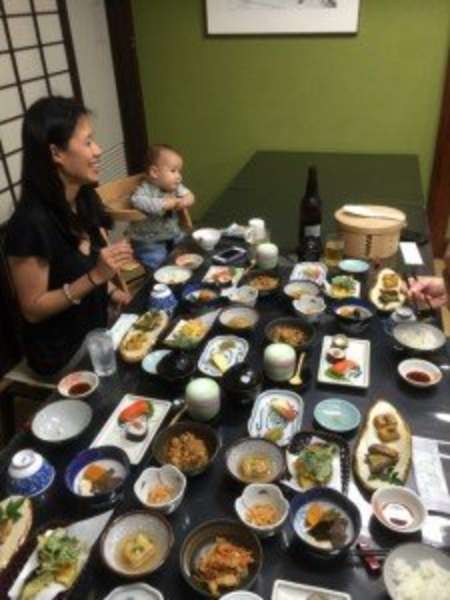
(10) Overcome any embarrassment and visit an onsen (spa bath)
It’s usually gender segregated; babies and children under 6 can go into either men or women’s sections. The water temperature is too hot for babies to be immersed, but Felix was perfectly happy crawling around, splashing at the margins. Onsens are so good, they can be addictive. More of this in a separate post.
Happy travels with your grand baby! Share your adventures!

Reposted with the permission of Poh-Ling Tan of Hello Grandbaby!, embracing the joys of grandparenting.
About Travellers Blog
Travellers Blog entries are submitted by travellers communicating their travel experiences in Japan and are published ‘as is’. Opinions written do not necessarily reflect those of JNTO. If you wish to submit a blog, please submit an enquiry through the contact us page.



















































